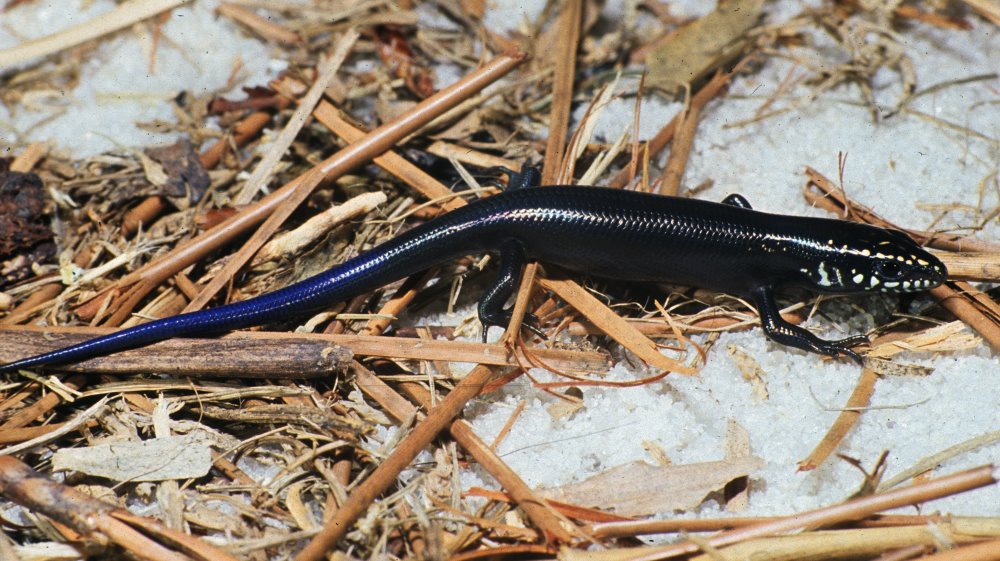
There is hardly any way to misidentify a hatchling Great Plains Skink.
There are in the USA 3 groups of moderately large-size (to 12+”, tail included) skinks. On the Pacific Coast there is the Gilbert Skink group with 5 subspecies, on the Atlantic Coast there is the 5-lined group with 3 full species, and in the Central States the subject of our discussion, the Great Plains Skink,
Plestiodon obsoletus, a stand-alone species.
It is probable that the Great Plains Skink is the largest of the genus, having been measured at 13 ¾”. It also differs in several other respects. Although the male’s temporal area swells slightly during the spring breeding season, it does not assume the bright orange-red color of the males of other species. It is the only skink species in the USA that has the lateral scales in oblique (slanted) rows. And rather than the uniform warm brown that gradually supercedes the brightly striped dorsal pattern and blue tail of the hatchlings and juveniles of the coastal species, the adult of the Great Plains Skink is grayish-yellow to straw-yellow and may or may not have the dorsal and dorsolateral scales edged with dark brown that gives the impression of stripes. And the hatchlings are usually a jet black with a cobalt blue tail and bold white or orange labial spots.
Breeding occurs in the spring and in early summer the female lays and guards a dozen to 20 eggs (sometimes less, sometimes more) that hatch after about 60 days.
This is a skink of the wide open spaces, although populations are often concentrated near permanent water sources. It ranges from southern Texas to extreme southwest Iowa and southern Nebraska, southwestward to central and southern Arizona. It also occurs in northern Mexico.
This is a typically colored and patterned Great Plains Skink. Some adults may have less or more dark scale edging.

This very dark adult Great Plains Skink was found beneath a rock on a Kansas hillside.



